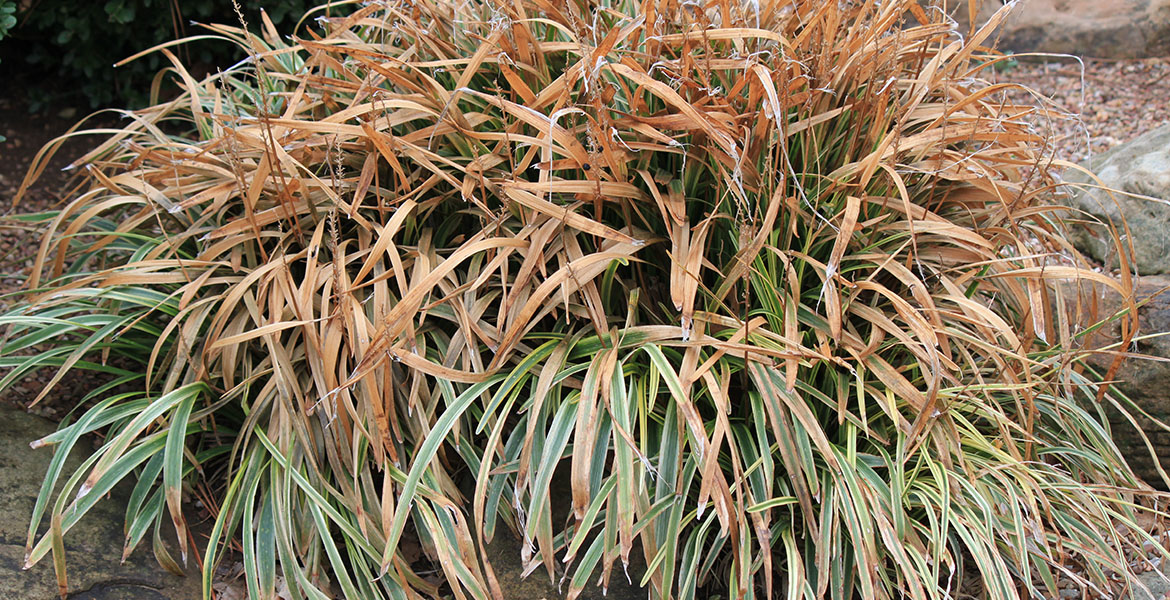
Effects of deep freeze on landscape plants
Thursday, March 18, 2021
At a time when many Oklahoma gardeners typically are planning their spring gardens, the state was dealing with ice, snow and sub-zero temperatures for an extended amount of time.
The deep freeze has many gardeners concerned about the health of their landscape plants, said David Hillock, Oklahoma State University Extension consumer horticulturist.
“Permanent damage occurs to plants when conditions are severe, prolonged or when the temperature suddenly changes. We definitely experienced severe and prolonged cold temperatures,” Hillock said.
“While gardeners are anxious to survey the damage and get started planting new plants, we need to put the brakes on just a bit because there isn’t much we can do right now. We’re in a wait-and-see pattern because the real extent of damage won’t be realized until plants break their winter dormancy and begin to grow – or in some cases, not grow,” he said. “For the time being, keep the gardening shears and trimmers in storage.”
As gardeners survey the landscape, some signs of plant damage are evident. Evergreens that were damaged by the freezing temperatures may be exhibiting brown or black foliage. Damage is most noticeable on broadleaf evergreen trees and shrubs, which may drop damaged leaves. Plants such as hollies, southern magnolia, boxwood, loropetalum, aucuba, heavenly bamboo, autumn olive and some privets fall into this category.
Hillock said most needled evergreens appear to have fared well with little to no damage, with the exception of deodar cedars and a few pines. Those trees already are exhibiting brown or yellow needles.
“Typically, when a needled evergreen loses its leaves, the chance for recovery is pretty slim. However, in my experience as a horticulturist, I have observed cases in which deodar cedars lose most of their leaves and still leaf out again in the spring,” he said. “The key here will be if the buds responsible for new growth this spring were damaged in the freeze.”
Gardeners may see brown, black, or mushy leaves and stems on their evergreen perennials. Most perennials will come back from their crowns and roots, especially if they were mulched or were covered with snow. Again, look for new growth in the spring before cutting back or planning for replacement.
Gardeners who plant trees, shrubs and flowers that are considered hardy to Oklahoma will likely see plant recovery, and those plants will send out new growth from the stems or crowns of the plants. When planning for new plants, it’s a good idea to use plants from the United States Department of Agriculture Hardiness Zones 6 and 7. Hillock said marginally hardy plants from Zone 8 or warmer, could have some serious damage due to February’s weather and may or may not come back, depending on the severity of the damage. An interactive map is available on the USDA Agricultural Research Service website.
“One way to check for life in woody plants is to scratch the bark with your thumbnail or knife. A live stem will be bright green and white just under the bark,” he said. “If it’s brown or black, then that portion of the stem is likely dead. However, that doesn’t mean the whole plant is dead. Be patient until growth begins in the spring before doing any pruning or removal of stems or branches.”
Understandably, with warmer weather on the way, gardeners are anxious to get back into the landscape, but this is a time when patience is vital. Gardeners don’t want to jump the gun and remove plants that appear to be dead, but in reality, survived the freezing temperatures.
“As we enter the growing season, be sure to keep the plant healthy through proper watering, fertilization and pest control. Keeping your plants healthy and vigorous will give them the best chance to recover from the winter stress,” Hillock said.
Casey Hentges, host of OSU Extension’s Oklahoma Gardening television program, has more information on landscape plants after the freeze.
MEDIA CONTACT: Trisha Gedon | Agricultural Communications Services | 405-744-3625 | trisha.gedon@okstate.edu
